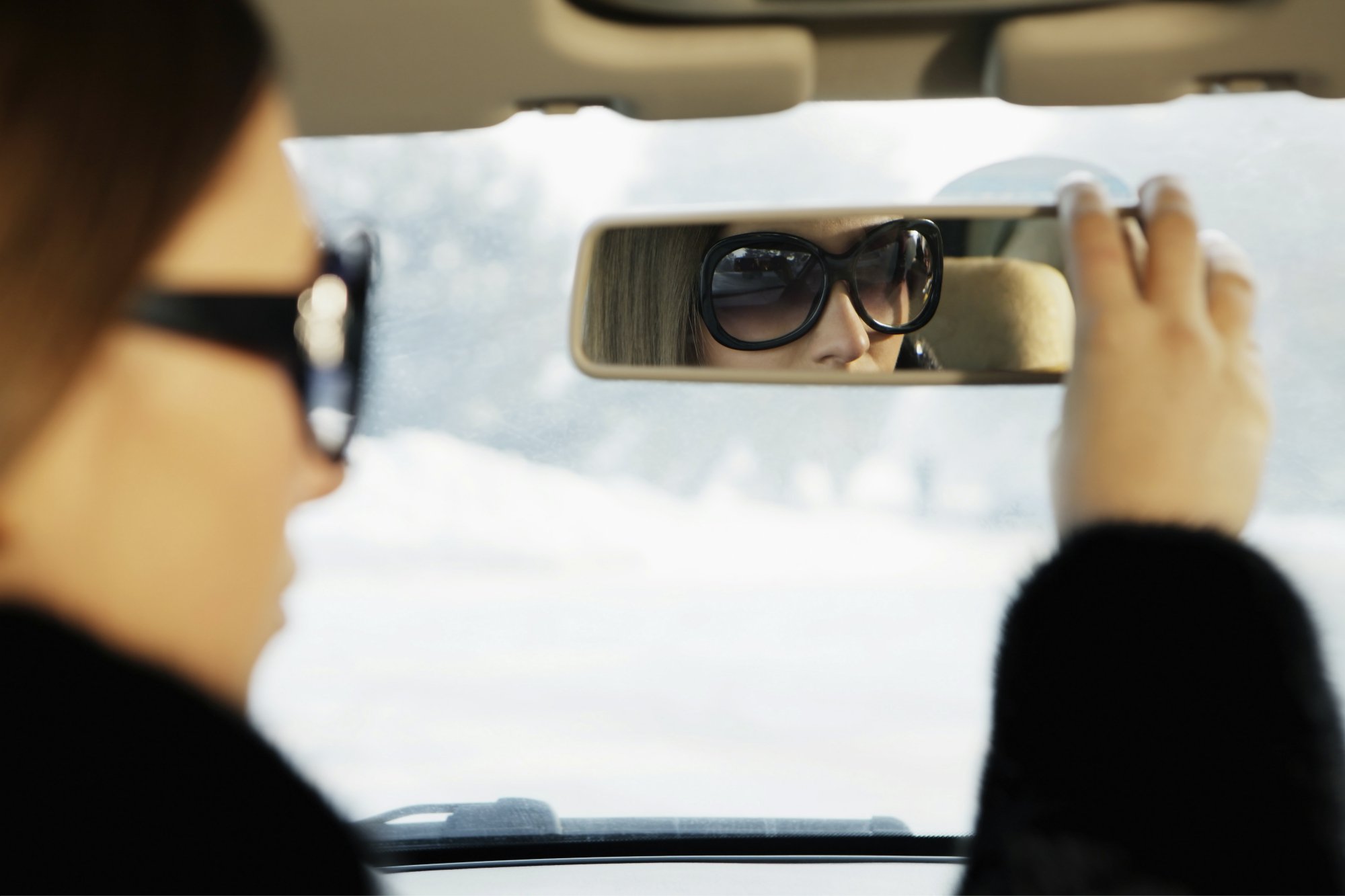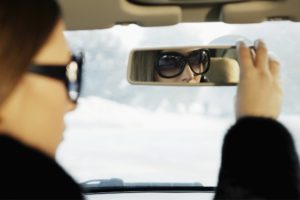Avoiding The Danger Ahead: Driving Tips For Snowy Conditions

Winter driving can be a scary experience, especially when you are forced to go out in a snowstorm. While there’s nothing that beats experience in winter driving, there are things you can learn on your own to help prepare BEFORE the bad weather begins. Being prepared you might spare a life – your own or others.
Don’t fear! We’ve put together this guide of all the tips and strategies you need to know in order to safe driving during this winter season. If you put these ideas into action, you’ll be as prepared to face the roads during snowy weather as one can be. Read on to see what steps you can take to make your driving experience safer and less stressful. We break it down into three categories – preparation before you leave your house, what to do while driving, and steps to take if you do have an accident. I hope these are helpful!
Before You Leave Your House
Preparation begins before you open your car door and sit in the drivers seat. Taking these steps can lower your risk of injury or death on the roads.
Practice Skidding and Sliding
Here’s the honest truth – if you drive in winter weather enough you will eventually lose control of your car. Hopefully it won’t be for very long, but you are going to skid or slide on snow and ice at some point. Conditions change so quickly on winter roads that it’s hard to see every problem that lies ahead on the highway.
If you’ve never experienced that feeling of skidding, it will be terrifying the first time. I wish that wasn’t the case- but it is. The solution – learn to handle a skid by practicing in a parking lot before hitting the roads. This allows you to be in a controlled, safe environment to practice the techniques to regain control of your car and be on your way. It will only become second-nature if you take the time to ingrain the skills into your memory. That comes through practice.
If you want a do-it-for-me experience, enroll in a winter driving class. Road America sponsors one near me – it’s supposed to be a blast and teach you many valuable skills. I know they are offered through North America and Europe, so search for one near your town if you’d like professional help.
Get Snow Tires
For some reason, it’s become common for people to think all-wheel drive cars don’t need snow tires. This is, as Dwight Schrute would say: False!

FALSE!
For the same car, a snow tire will give better handling and stopping power than a set of all-season tires. It’s a fact. If you don’t believe me, watch this video from some of our Canadian friends:
I know not everyone thinks they have the money for another set of tires but it’s definitely the easiest thing you can do to increase winter driving safety. I personally won’t drive in winter without them.
Do You Need To Be Driving Today?
“If you don’t need to be on the road (in bad weather), stay home,” says America’s Road Team Captain Brooks Washburn in an interview with Fleet Owner Magazine. While Brooks often has no choice about being on the road as a long haul trucker, that’s great advice for the average driver. If there is severe winter weather, you need to ask yourself- do I absolutely need to head out on the road today, or can I wait until conditions have improved?”
I get it – often you really do need to drive during inclement weather. If this is the case, try to schedule your travel during the daylight hours to make it as easy on you and others as possible. But sometimes we inflate the importance of doing an errand or a night out. When there is significant snow and ice on the roads, make sure to take an objective look at how important it is to take your trip NOW. Your life is worth it.
Remove Ice And Snow From Your Car Before You Head Out
It’s a fact of life that cars left outside in the winter get covered in snow and ice. While clearing them isn’t the most enjoyable job in the world, it is critically important. Clearing your windows and roof of snow ensure you have maximum visibility and help avoid creating a hazard for cars and trucks following behind you. Make sure you get all the passenger windows cleared as well – don’t allow ice and snow to create additional blind spots on your vehicle.

Check and Refresh Your Emergency Kit
The time to make sure your emergency kit is up-to-date is before you need it. As temperatures plummet, having the right supplies can be a matter of life or death if you get stranded on a roadway. Whether you buy a pre-made kit or put together your own, make sure it contains the following items:
- Battery or crank powered radio
- Flashlight (check batteries!)
- Warm blanket
- Window scraper and brush
- Jumper cables
- Fire extinguisher
- First aid kit
- Charged USB power bank for your phone
- Non-perishable foods (think candy or granola bars)
- Bottled water
- Tire repair kit – I use foam but mechanics hate it
- Roadside flares – to warn traffic behind you if you do go off the road
- Tire chains if you live in an area that requires them
If you want to beat the storm, you have plan hours ahead. Sometimes rain comes ahead of the snow. If left alone, it’ll turn into ice – that’s a problem. For this reason, you must scape the rain/ice mix as quickly as possible! In case you go during heavy rain, you’ll find out when you’ve got a river running later on. Still, by knowing if it is about to fall below freezing can help you prepare, or if there is strong winds that might hinder sanding efforts. Winter weather is unpredictable and things could possibly be much worse as you attempt to cover miles in the snow.
Getting Out Of Your Driveway
There are a few ways to get out of a snow filled driveway and on to a road, even in big snow. You can use a snowblower (aka a snowthrower, depending where you live). But for a bigger (half mile or longer) path, you’ll need something more.
A snowplow is a common solution to clearing a long driveway of snow and ice. This used to mean having a pickup truck or large SUV, but that’s not the case today. All-terrain vehicles have gotten popular for this job in the past decade. You can buy kits to throw a plow on the front of one, and push your way to the public roads. If the snow is too deep for an ATV to function, you probably don’t want to be driving anyway.
Staying Safe While Driving
Once you are on the road, you need to remember to slow it down. Driving too fast for conditions is the leading cause of winter driving accidents. All of the elements are working against you operating at normal speed, so the sooner you can accept it will take longer to travel than normal the safer you will be. It’s better to get to your destination a little bit late than to get in an accident on the way.
While we all know it takes longer to stop on snow and ice, most people under-estimate just how much extra room is necessary. Depending on the environment it can take between 3 and 12 times more stopping distance in wintery conditions than during summer driving. Look and plan farther ahead than you might normally do.
Bridges and overpasses can be particularly treacherous when the temperature is near freezing. These constructions tend to ice-over first before the rest of the roadway. Many an unsuspecting motorist has lost control on an overpass that iced over. If the temp is hovering around 0C/32F, slow it down a bit before going over the bridge. You really don’t know what you are going to face.
What to do if you start skidding?
If you have never entered a skid before it can be a very scary experience. Assuming you didn’t follow my advice from earlier, you’ll now need to learn how to handle the skid on the fly. Don’t panic – you need to keep your wits about you.
To begin – remove your feet from the brakes and the accelerator. You need the car to simultaneously slow down and regain traction. If you brake, you’ll lose traction; if you keep your foot on the gas, you won’t slow down.
Next, gently steer the direction you want the car to go. Look in that direction and slowly move the steering wheel to follow as well. The emphasis here is on gentle and slowly – most skids become wipeouts when people panic, oversteer, and the car begins gyrating back and forth out of control. Braking makes this situation worse by removing traction available to help regain control – so don’t brake!
You’ll begin to feel the car regaining traction. What you do next depends on whether the front or back wheels led the skid. If the front wheels are skidding, gently brake to redistribute some weight over that axle. If the back end is causing the skid, slightly accelerate to help put weight over those tires.
This will all happen quickly, and becomes easier with practice. Remember, don’t panic, no pedals, steer gently, and regain control.
- Drive slower than you normally would
- Use your turn signals to help other drivers anticipate your movements
- Give yourself more space to brake – six seconds distance is the minimum time needed to come to a complete stop
- Drive with your lights on – even in the daytime
- If you have a rear-wheel drive vehicle, put sand or salt in the drunk to help provide traction
- Use Snow Tires – they work on all cars including 4-wheel drive models and really help with braking on snow
Opps! I’ve Crashed!
Sometimes you will get in an accident in a winter storm. No doubt this stinks, but it’s part of the risk we take traveling during bad weather. Hopefully it’ll be nothing like this pileup from a few years ago, caught on a local DOT camera:
Most of the time, this will be an inconvenience. However, a real whopper of a storm can up the danger to your life from small to significant. If emergency personnel are already stretched thin dealing with other accidents, it might take awhile for police or rescue to reach you if you need help. In addition, accidents tend to happen at the same stretch of road because conditions change quickly causing motorists to lose control. Therefore, you are in higher danger sitting on the side of a slippery road than you would be normally on the shoulder.
Experts suggest you stay in your car as much as possible WITH YOUR SEAT BELT FASTENED after a winter accident. You are much more likely to be killed being hit by a car as a pedestrian than as a passenger in a car – stopped or not. While you’ll need to get out to communicate with another driver about insurance and other personal information if you hit them, don’t take more time out of the car than necessary.
Throw on your hazzard flashing lights to help alert traffic behind you there is a problem up ahead.
If you end up stuck in a ditch and it looks like it might be awhile before you are rescued, heat your car by running it for 10-15 mins every hour. Make sure your exhaust pipe isn’t covered, then start the car and let it idle to warm up the interior. If you prepared correctly, you’ll have more than enough fuel to stay warm using this method.

